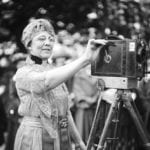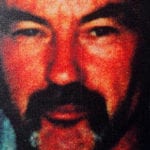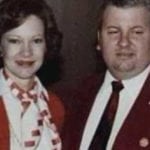 Creepy
Creepy  Creepy
Creepy  Technology
Technology 10 Scientific Breakthroughs of 2025 That’ll Change Everything
 Our World
Our World 10 Ways Icelandic Culture Makes Other Countries Look Boring
 Misconceptions
Misconceptions 10 Common Misconceptions About the Victorian Era
 Mysteries
Mysteries 10 Strange Unexplained Mysteries of 2025
 Miscellaneous
Miscellaneous 10 of History’s Most Bell-Ringing Finishing Moves
 History
History 10 Great Escapes That Ended Right Back in Captivity
 Weird Stuff
Weird Stuff 10 Fascinating Things You Might Not Know About Spiders
 Food
Food 10 Everyday Foods You Didn’t Know Were Invented by the U.S. Military
 History
History 10 Odd Things Colonial Americans Kept at Home
 Creepy
Creepy 10 More Representations of Death from Myth, Legend, and Folktale
 Technology
Technology 10 Scientific Breakthroughs of 2025 That’ll Change Everything
 Our World
Our World 10 Ways Icelandic Culture Makes Other Countries Look Boring
Who's Behind Listverse?

Jamie Frater
Head Editor
Jamie founded Listverse due to an insatiable desire to share fascinating, obscure, and bizarre facts. He has been a guest speaker on numerous national radio and television stations and is a five time published author.
More About Us Misconceptions
Misconceptions 10 Common Misconceptions About the Victorian Era
 Mysteries
Mysteries 10 Strange Unexplained Mysteries of 2025
 Miscellaneous
Miscellaneous 10 of History’s Most Bell-Ringing Finishing Moves
 History
History 10 Great Escapes That Ended Right Back in Captivity
 Weird Stuff
Weird Stuff 10 Fascinating Things You Might Not Know About Spiders
 Food
Food 10 Everyday Foods You Didn’t Know Were Invented by the U.S. Military
 History
History 10 Odd Things Colonial Americans Kept at Home
10 Horrifying Facts About America’s First Serial Killer
You walk into a room, and the door suddenly slams behind you. You hear gas hissing. A sinister eye stares hungrily at you from a hole behind you while you gasp and scream for your life—just before you die. That was H.H. Holmes on a good day. Even before Jack the Ripper stalked foggy streets and black alleys in Whitechapel, “Dr. Henry Howard Holmes” was working on fulfilling his own sinister fantasies in plain sight.
Holmes would become the United States’ first (and some argue worst) serial killer. He was actually named Herman Webster Mudgett at his birth on May 16, 1861, in Gilmanton, New Hampshire. At the time of his execution on May 7, 1896, the police suspected him of nine murders, and he confessed to at least 27. Nobody can be really sure how high his final head count was, since he used so many aliases throughout the Northeast, Midwest, and Canada. Some estimate as many as 200 victims. Local Chicagoans knew the monstrosity on Wallace and 63rd that Holmes constructed as “the Castle.” After he was arrested, they dubbed it “Murder Castle.”
10 Holmes Was Abused And Ridiculed As A Child

Both emotionally and physically abusive toward their son, Herman Webster Mudgett’s parents probably set the boy off on the wrong path right from the start. Although they both deprived him of food and locked him up alone for long periods of time, his father was especially abusive to Herman and his siblings. He would allegedly hold kerosene-soaked rags over his children’s mouths to quiet them down when they cried too much.
Herman would go to a nearby set of woods to escape the horrors at home, and it was there that he is believed to have started cut animals up and develop an unhealthy interest in all things dead. Since most serial murderers never form meaningful relationships and are six times more likely to have experienced abuse at home, many researchers feel that Mudgett’s childhood ordeal most certainly led to his uncanny ability to fool people into falling for his traps time and time again.
Mudgett’s parents weren’t the only source of abuse in his life, either. On the way home from school one day, he was allegedly accosted by some older boys, who took him into a local doctor’s office and introduced him to a human skeleton, making him touch it. Scared at the time, he would later claim that the event not only helped him face some internal demons he had, but it led directly to his interest in human anatomy and to his enrollment in Michigan’s University’s medical school.
9 Holmes Robbed And Mutilated Corpses
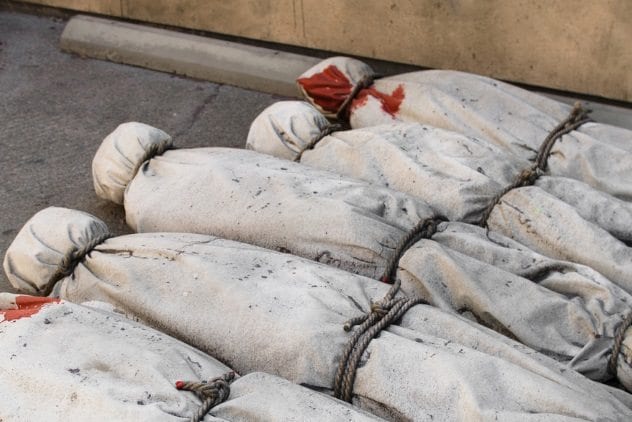
While attending medical school at Michigan University, Holmes helped pay his way by stealing cadavers from the morgue and mutilating them to appear as if they had been injured in some violent accident. He’d then attempt to collect life insurance on the corpse by claiming that it died “naturally.”
Dying in an accident is something that would have been very believable in late-1800s Chicago. For instance, from 1889 to 1893, over 1,469 pedestrians were killed in the Chicago area just by trains alone, and the figures increased yearly. In 1889, 257 people were killed by trains, and by 1893, the figure had risen to 431. Dying a horribly violent death in the young, bustling metropolis of Chicago was tragically quite commonplace.
Obviously, this fact wouldn’t have been lost on Holmes, who would perfect his grisly insurance fraud scamming techniques over time, making a reported $12,000 on a single scam, not to mention the $10,000 Pitezel scam he temporarily got away with. These were no small fortunes in the late 19th century, when a skilled laborer made less than $20 a week.
8 Holmes Was A Bigamist
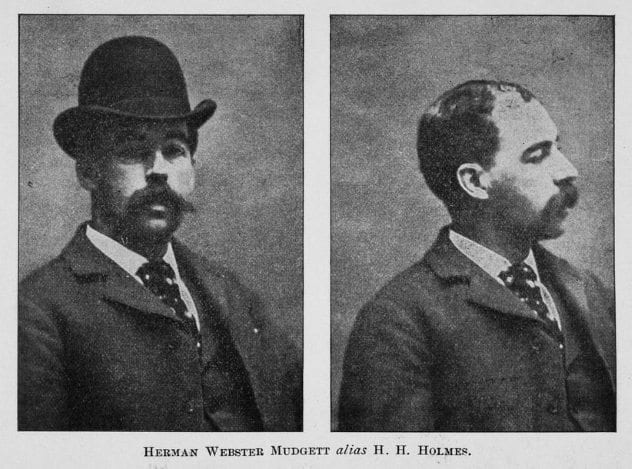
When Holmes was sent to his death on the gallows, he was married to three women at the same time. Holmes’s first marriage took place while he was still a teenager on July 8, 1878, to a woman named Clara A. Lovering, from Alton, New Hampshire. About nine months later, he got married again in Minneapolis to Myrta Z. Belknap, without divorcing Clara. By 1889, Holmes and Myrta lived in Englewood, Illinois, where their daughter, Lucy Theodate Holmes, was born on July 4, 1889. By the time he lived in in the classy Chicago suburb of Wilmette, Holmes was rarely home and spent a lot of time “conducting business” in the city, scamming people by running up credit with no intention of ever paying as well as torturing and murdering guests.
Holmes did find time to start divorcing Clara shortly after marrying Myrta but never completed the process. A woman named Georgiana Yoke became his third wife on January 9, 1894, and being quite the womanizer, Holmes also had relations with the wife of a former employee of his, Ned Connor. Her name was Julia Smythe, and she was to later became one of Holmes’s victims. These marriages gave Holmes three wives in as many different states when he found himself dangling on the end of a short rope.
7 Holmes’s ‘Murder Motel’ Was A Macabre Mystery
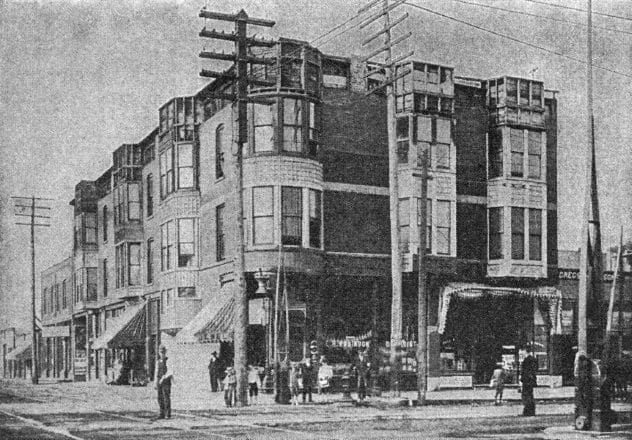
The 1893 World’s Fair, or Colombian Exposition, ran in Chicago from May 1 to October 31 and attracted millions of people. The front entrance to the huge event was just blocks from Holmes’s business. In 1886, Holmes bought a drugstore from E.S. Holton, who conveniently died. After Holton’s death, Holmes, being a pharmacist himself, made a lot of money and proceeded to buy the entire block across the street from his drugstore. He finished a huge hotel just in time for the World’s Fair.
After Holmes’s arrest in Boston, investigators raided his “Murder Motel.” They found that roughly 100 rooms in the labyrinth had no windows. You could wander around in the dark for hours, going up stairs and opening doors leading to nothing but brick walls, and just like a carnival fun house, some things were off-kilter and very disconcerting. Holmes’s plan was brilliant. He would hire workers, only let them do so much, and then fire them. He’d then hire more and rinse and repeat the process, accomplishing two things: Nobody but Holmes knew the actual layout of the building, and he got out of paying creditors and workers.
A good example of this deviousness is the bank vault that Holmes purchased on credit. He had it installed early and then had workers build around it. When the company later threatened to sue Holmes for nonpayment, he quickly counter-threatened to sue them for damaging his building removing it. Holmes kept the safe and made use of it. He later confessed to shutting Annie Williams inside it and letting her die in what had to be a long and agonizing death. He even stated that marks on the vault door were from the poor girl trying to kick her way out of her steel tomb.
6 Holmes Tortured And Deboned Victims To Sell Their Skeletons
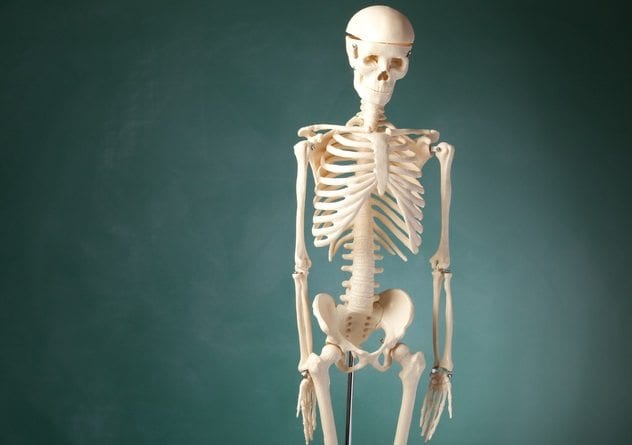
Several rooms in the Murder Motel were soundproofed and plumbed with gas lines. Random victims would be asphyxiated in these while Holmes watched through strategically placed peepholes. Chutes led straight down to the basement. They were greased so that the bodies wouldn’t get stuck on the way down to be “processed.” In the basement, investigators found a torture device resembling the infamous medieval “rack” that was used to stretch people out. Holmes tried claiming that he used it for an innocent medical procedure. Not surprisingly, nobody believed him, since that didn’t explain the dissecting tables or the hideous tools and other devices they found.
The basement was both Holmes’s processing room and playroom. Here, Holmes had his sinister way with his victims, most likely torturing many just for the thrill—but always with profit potential on his psychotic mind. According to an experienced FBI profiler, this is an area where Holmes was an enigma, even for serial killers, because profiting from mutilation and murder doesn’t coincide with the profiles of other serial criminals. Holmes also graduated from a prominent medical school, yet another achievement that many serial killers have never realized.
The most disturbing device, if there is one, had to have been the dissecting, or deboning, table, where Holmes would remove the flesh from individuals whose skeletons were suitable for medical displays. These he would restore and sell as “articulated skeletons” to unsuspecting medical institutions around the country. Holmes also had a lime pit and a crematorium, most likely for disposing of victims whose skeletons he couldn’t sell. This, along with the Murder Motel as a whole, is a good example of how Holmes was hiding evidence of his crimes right out in plain sight.
5 A Deadly Deal
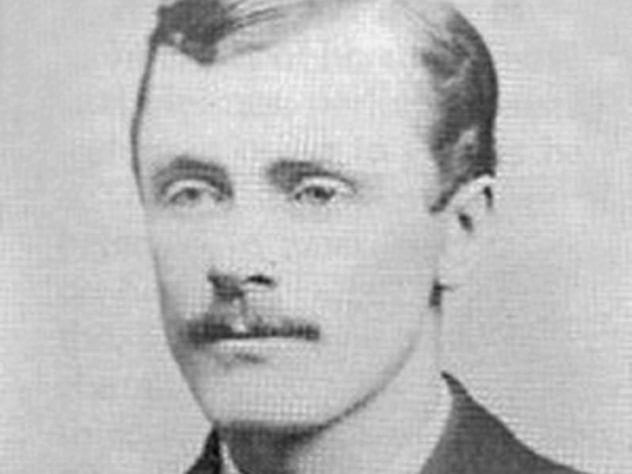
Benjamin Pitezel unknowingly signed his, and his children’s, death certificates the day he met Holmes. Pitezel, hired as a carpenter, would end up being a close business associate and friend of Holmes—who managed to also befriend Pitezel’s family—in what turned into a deadly pact. In 1894, Holmes convinced Pitezel to fake his own death in a $10,000 life insurance scam. Holmes was supposed to both supply a dead body to show to the medical examiner and provide all the paperwork required by the insurance company.
The problem for Pitezel was that his fiendish “partner” had planned on skipping the first step all along. In fact, Holmes later admitted, “I intended to kill [Pitezel], and all my subsequent care of him and his [family] [ . . . ] were steps taken to gain his confidence.” Elaborating further, he said, “I knew he had a family who would later afford me additional victims for the gratification of my bloodthirstiness.”
First, Holmes used chloroform to knock Pitezel out. Then, he forced him to swallow embalming fluid, only to set him on fire. After killing Pitezel and filing the insurance claim, Holmes went to Pitezel’s wife, Carrie, and convinced her that her husband had scammed them both and had run off with all of the insurance money. He also talked her into helping him in another of his schemes, which involved her traveling to the East Coast and leaving some of her children behind with him.
In the meantime, Philadelphia detective Frank Geyer had accidentally found Pitezel’s body in Philadelphia, at 1316 Callowhill Street. Geyer discovered that Holmes had identified Pitezel’s body in the company of one of Pitezel’s children, and after collecting the insurance money, he had disappeared with at least that one child. Both police and Pinkerton detectives were on to Holmes now, and he was wanted for the murder of Benjamin Pitezel.
4 A Horse Brought Holmes Down

Train robber Marion Hedgepeth had served time with Holmes, who was in prison under the false surname of “Howard.” Holmes had told Hedgepeth about his $10,000 life insurance scam and promised to pay him $500 if he’d locate the services of a “suitable” attorney. Holmes collected the insurance money but never paid Hedgepeth, who got back at Holmes by telling the cops about the scam.
The police didn’t have much to go on concerning the insurance fraud, but they did have an outstanding warrant on Holmes for stealing a horse in Texas that they could arrest him on. When they finally caught up with him in Boston, Holmes, who was scared to death of going to prison in Texas, confessed to the fraudulent insurance claim but not to killing Pitezel. He said he’d gotten the body for the scam from a physician in New York, who shipped it to Philadelphia for him.
Holmes almost got away with Pitezel’s murder, but the investigators knew that when the body was discovered, it was in full rigor mortis, so death had occurred recently before being discovered. Armed with this knowledge, they asked Holmes how he managed to defeat this inevitable death process, but for once, Holmes had no answer and knew he was caught.
3 Holmes Buried His Own Defense And Then Asked To Be Buried In Cement
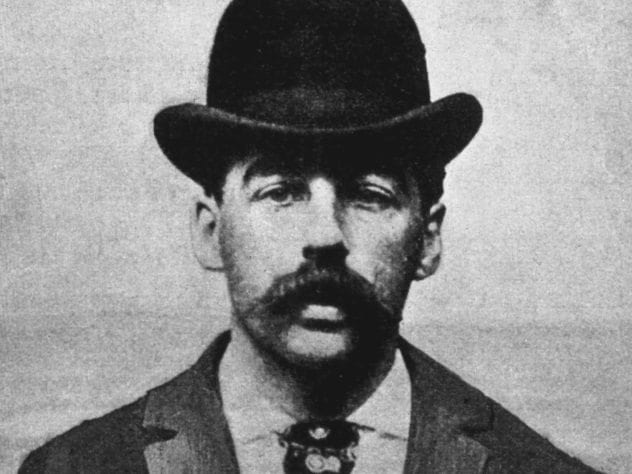
Holmes’s trial began on October 28, 1895, in Philadelphia. The Holmes murder case was dubbed as the “trial of the century” and was just as much of a media circus as the O.J. Simpson trial was 100 years later—and Holmes would go out of his way to make it so.
On the first day of the proceedings, Holmes fired his lawyers. In charge now, he tried running the show, so to speak, and seemed to do well at first, but then the prosecution got tough on him, and he started making mistakes. He failed to convince the jury of his claims that Pitezel tried to kill himself because the prosecutors showed the jury how that scenario wasn’t possible when considering the indisputable evidence that the crime scene and the autopsy provided.
On day three, Carrie Pitezel was led into the courtroom dressed in black. She tearfully testified to the insurance scam and how awful it was to think of her children alone with Holmes. She got the entire courtroom in tears except for one spectator: Holmes, who was doodling on a tablet. Later, Holmes would break out crying hysterically after seeing Georgiana Yoke, his third and final wife, in spite of showing absolutely no remorse for Carrie Pitezel’s wailing over pictures of her three kids in the morgue. The jury didn’t buy his remorse, and Holmes, aka Herman Webster Mudgett, was sentenced to hang on May 7, 1896.
After unsuccessfully defending himself at his trial, Holmes made a very strange request of the court: He asked to be buried in 3 meters (10 ft) of cement because he was afraid that people would want souvenirs or to dissect his body. Ironically, the court granted his request.
2 He Was Paid For His False Confession And Died A Hard Death
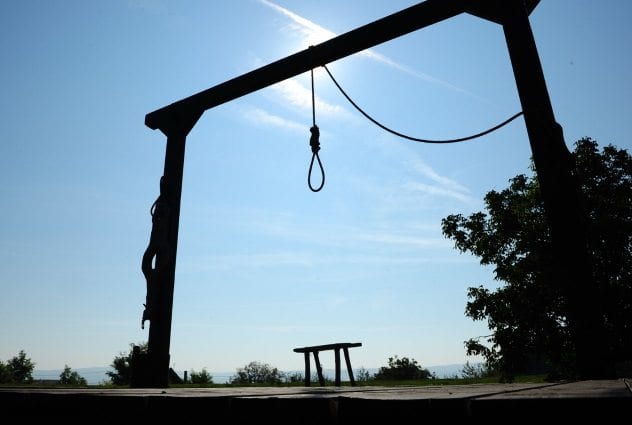
Hearst Newspapers paid Holmes a whopping $7,500 for his written confession. However, it turned out to be a terrible investment because Holmes did nothing but give different accounts of more crimes than he confessed to originally. In his confession, he admitted to over 100 murders while managing to do nothing but discredit his entire story in the end. Most think he didn’t care, anyway.
When he was hanged, Holmes’s neck didn’t break as intended, so he slowly strangled to death, writhing for over a quarter of an hour before being pronounced dead 20 minutes after the long drop on a short rope. Thanks to the media, the one thing Holmes is most famous for saying is, “I was born with the devil in me. I could not help the fact that I was a murderer, no more than the poet can help the inspiration to sing. I was born with the evil one standing as my sponsor beside the bed where I was ushered into the world, and he has been with me since.”
Holmes was one sick puppy and will be featured in an upcoming movie called Devil in the White City, starring Leonardo DiCaprio as Holmes.
1 He Murdered Three Children
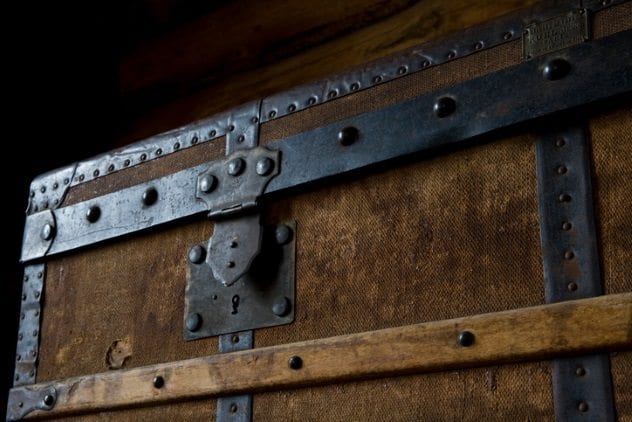
Holmes not only killed his best friend and business partner but three of his kids as well. Holmes described how he cut Benjamin Pitezel up into small pieces and then burned the remains in a kitchen stove “as if they were some inanimate object.” He used corn cobs for extra fuel.
Mere months after Holmes murdered their dad, Nellie and Alice Pitezel, whom he’d taken to a house on Vincent Street in Toronto, Canada, were now on his list. There, he talked the two little girls into climbing into a trunk. After doing that, he fed tubing into it and pumped in gas to asphyxiate the girls. He then buried them in the cellar.
Holmes spoke of seeing “their little blackened and distorted faces” while stripping them of their clothes as well as “the burial without a particle of covering save the cold earth, which I heaped upon them with fiendish delight.” Nellie and Alice had a brother named Howard, whose remains were found by Detective Frank Geyer a year later at a home outside of Indianapolis.
I live in Northwestern Pennsylvania in the United States of America, and in “one of the Original 13” I like to say, where I grew up with a fascination for collectibles like baseball cards, coins, stamps, and old bottles just to name a few. Always a self-starter, I’ve taught myself many different things and have ended up with a large variety of skills and hobbies in both old and new and have recently started putting them to use on the Internet. I have been writing in several capacities for several decades.

